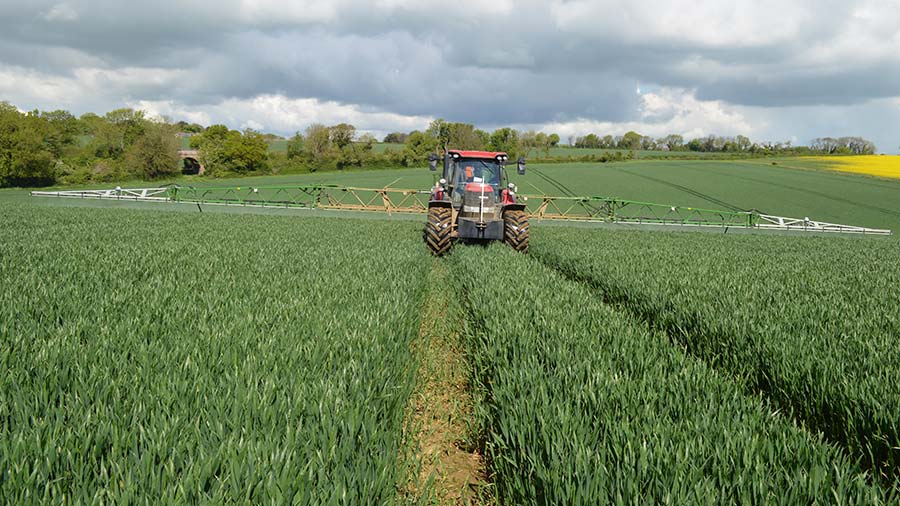Winter wheat growers have relied on two main fungicide products this season to give effective control of septoria in one of the worst seasons for coping with the yield-sapping wet weather disease.
With a very wet early spring, septoria crept up wheat crops and growers have often struggled to keep the disease off the key top three leaves, which make a big contribution to final yield.
See also: How a free test is keeping one wheat grower on top of disease
Dr Aoife O’Driscoll, crop production and agronomy specialist at crop consultant Niab, said because of the high disease pressure, growers needed to have used Revystar or Univoq to have the best chance of controlling septoria.
“For growers that didn’t use these two products, they would have struggled to keep leaf two alive,” she told Farmers Weekly at the Cereals 2023 event held on the Thoresby Estate in Nottinghamshire.
Two key products
Of the two relatively new products, Revystar contains the SDHI fluxapyroxad and azole mefentrifluconazole, while Univoq is a mix of the picolinamide fenpicoxamid and azole prothioconazole.
With climate change appearing to have led to milder, wetter winters followed by hot summers, wheat growers are having to use the very best and most-effective fungicides to keep diseases at bay.
Aoife said there was an extremely high level of septoria spores in wheat crops in April due to the big area of septoria-susceptible wheat varieties being grown, exacerbated by often early autumn drilling and the mild winter.
With many crops struggling from stress, scorch, and septoria, it proved a tough year for fungicides – even the top-performing ones such as Revystar and Univoq – to show good curative or eradicant activity on disease.
“Because of their eradicant activity, growers this season had to have used Revystar or Univoq,” she added.
She also pointed out that the multisite fungicide folpet performed well in protecting crops from further infection when using two or three splits of the product added to curative fungicides.
Autumn drilling
For this autumn, she emphasised that growers of Group 2/3/4 wheat varieties should look at those with a 6-plus septoria resistance score and a 8-plus yellow rust score, on a 1-9 scale where 9 is very resistant and 1 is susceptible.
There is a limited number of Group 1 milling wheats and many have clear disease resistance weaknesses.
Dr Kostya Kanyuka, head of plant pathology at Niab, added that the high disease pressure meant that fungicides could not completely suppress septoria in wheat.
“There was a high build-up of septoria inoculum in the autumn, as October and November were unusually as warm as September,” he said.
Key fungicide actives
|
| Ascra – SDHIs bixafen and fluopyram + azole prothioconazole |
| Elatus Era – SDHI benzovindiflupyr (Solatenol) + azole prothioconazole |
| Revystar – SDHI fluxapyroxad + azole mefentrifluconazole (Revysol) |
| Univoq – picolinamide fenpicoxamid (Inatreq) + azole prothioconazole |
 © MAG/David Jones
© MAG/David Jones 
